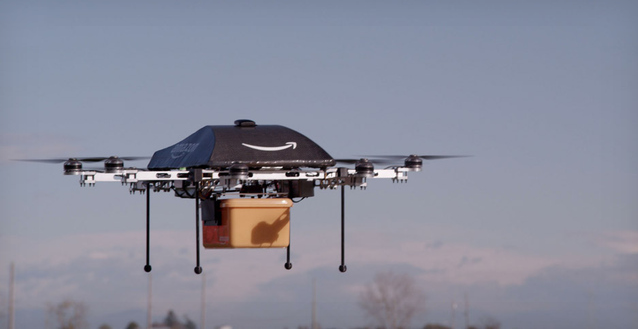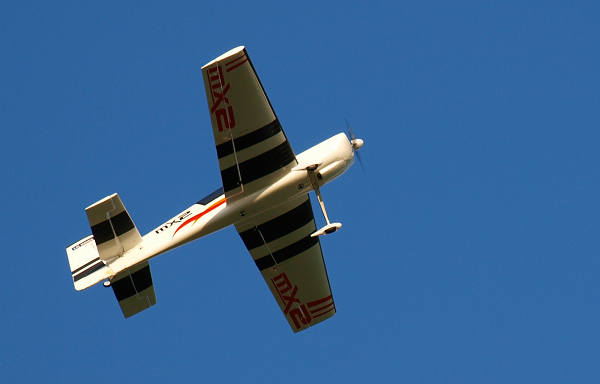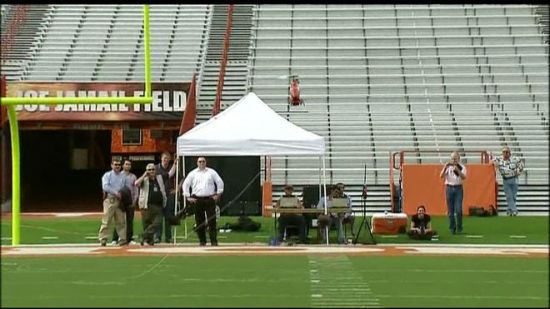
Amazon revealed that it is planning to use unmanned drones to deliver packages. Not long after that, Google also announced that it too has a top secret project to build autonomous robots. As far as we are concerned, the future is very much upon us. Not least from the highly controversial deployment of military Unmanned Aerial Vehicles in combat zones.
But what is a Drone? And why is the tech community so excited about it?
Continues after the break.
Drones another name for unmanned aerial vehicles (UAV); which is any flying machine without a pilot physically sitting in it. The more common are the civilian versions with multiple rotors for flight, which is the same kind that Amazon is apparently planning to deploy in their delivery services. These generally rely on four or more spinning blades to stabilise flight, and are easily available. Their size varies from tiny quadrocopters that risk being destroyed by a child sitting on them, to about a metre in length.
Another class of civilian UAV are remote control aircraft. These machines tend to get forgotten these days, but provide a point of reference for the currently vague legal status of drones. For reference, the Malaysian Department of Civil Aviation actually has a policy for the operation of unmanned aircraft. This policy is wide enough that it might also cover the commercial quadrocopters on sale, although whether this is true is still unknown. Although for some reason, these two similar machines are often considered completely different animals (at least in the eyes of the law).

Some drones are also fitted with cameras and extra sensors for search and rescue operations, forest fire detection, and wildlife conservation. The WWF donated a pair of UAVs to Nepal in 2012 to assist in efforts to tackle increased poaching of endangered animals. Google has also donated some US$5 million to the organisation to improve aerial surveillance capabilities.
This description falls within the hopeful, cheerful side of drones. Recalling the potential of the future where autonomous machines fly around and do things for us. Like the father in Vermont who built a drone to ensure his son reaches the bus stop; or the Swiss Ecole Polytechnique Fédérale de Lausanne laboratory that used threes drone to map the Matterhorn in the Swiss Alps (all in under six hours).

Movie making has also changed with drones making it easier (and cheaper) to take aerial footage. Especially since most of them can be fitted with HD cameras. However, this practice is questionable because several countries prevent the usage of drones in commercial ventures. In other words, you aren’t supposed to do it. Something that might reduce the chances of Amazon pulling off their delivery drone fleet in the near future.
The UK doesn’t have the same restrictions, and Dominos actually tried a PR stunt using a drone to deliver pizzas. The Domicopter completed a 6.4km delivery in under 10 minutes, although it did require a remote pilot to get it to the spot. Australia has similarly embraced drone deliveries with a textbook rental company using a fleet of drones to deliver books to college students in Sydney.

Once this method of delivery is perfected, there will no longer be those hours of wondering if the delivery man got lost again.
Despite all this potential, drones have a couple of small weaknesses. Aside from being highly vulnerable to bad weather (like the kind we have here every couple of weeks), the machines have practically zero security around them.
Security research Samy Kamkar developed and released a set of technical instructions for hijacking the popular Parrot AR.Drone. He even made the package small enough to be carried by another drone. The hack works because the Parrot drones only use a specific set of MAC addresses. Once it finds these addresses it just starts up an open source WiFi hacking app and disconnects the original user. By the way, a similar system was used by the Iranians to hijack an America surveillance drone.
If hijacking a drone proves too much work, it is also possible to spoof GPS information to make the machines crash. It takes a little more effort to pull this off, which is why it has only been done by researchers under controlled situations. It’s not really an issue with the drones themselves, rather another weakness of the existing GPS system.

Plus, if all else fails. A carefully thrown rock will easily disable a civilian drone.
The ease of this operation might put any potential drone services on hold. At least until someone comes up with better security. Despite this, most of the companies already experimenting with drones have not reported any trouble with people taking out their aircraft. Could be because nobody is even aware that this is going on, or could be because it’s not easy to locate a flying drone. Those things are tiny.
Although, it could be that the countries that use drones have tight gun control laws which reduces the number of people who have the capability to shoot the things down. That could be something to consider.

